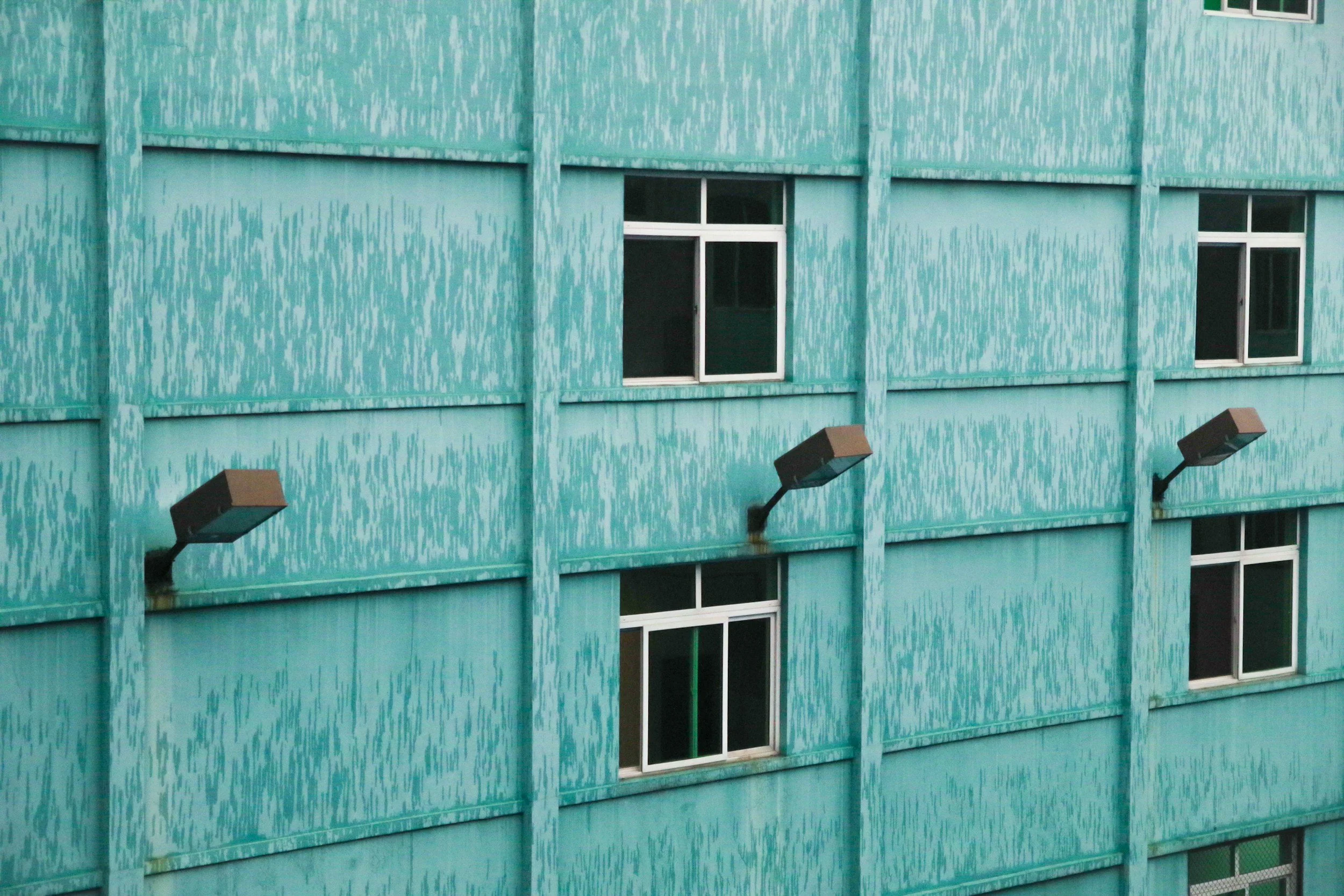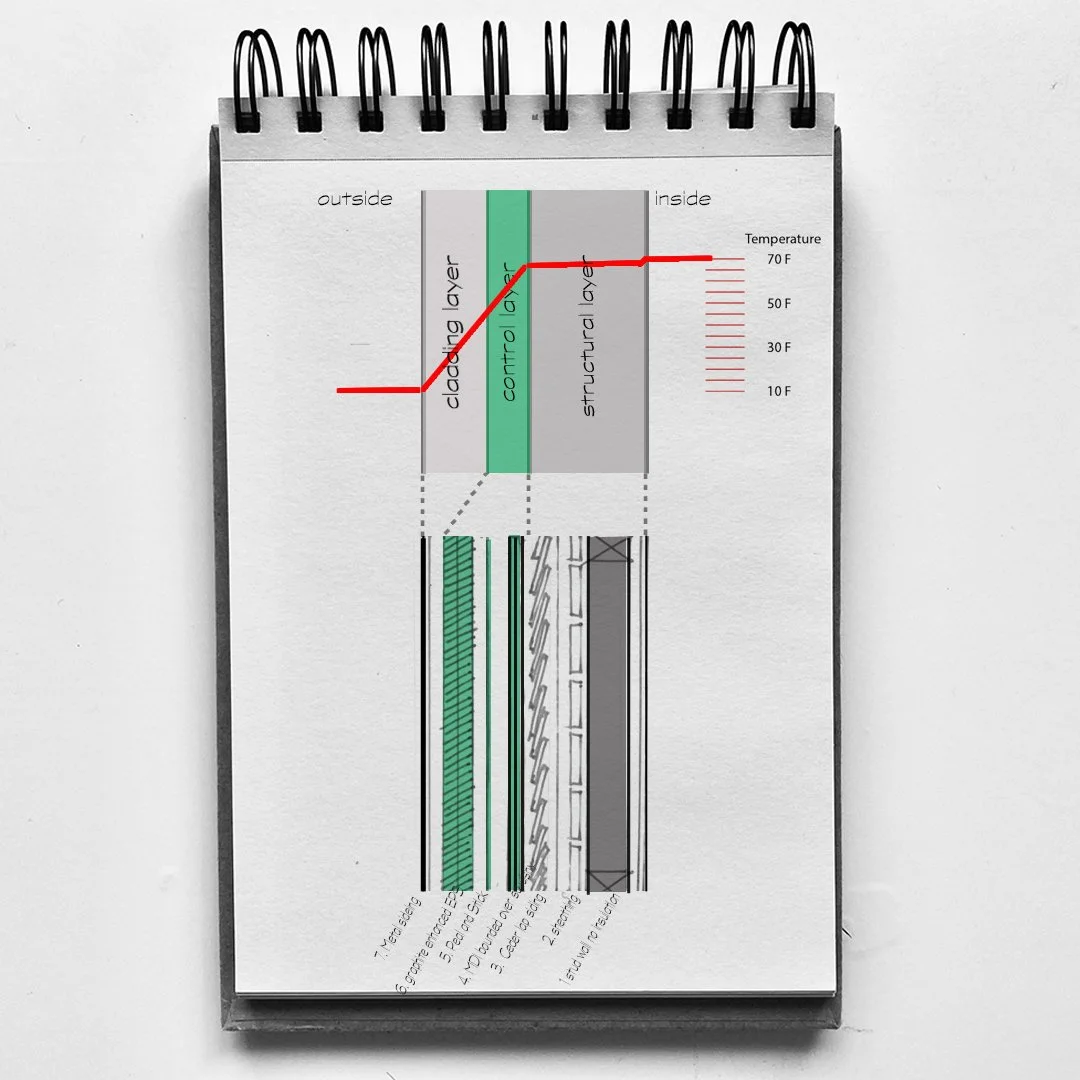What is the perfect wall?
The “perfect wall” is a building science concept that emphasizes the control layer of exterior wall assembly. It functions as an advanced environmental separator of a dwelling to avoid air infiltration, keep water and water vapor out and provide thermal control in a logical manner.
The perfect wall is presented in the following order (from exterior side to interior side)
a rain (water) control layer
an air control layer
a vapor-controlled layer
a thermal control layer
Why does the perfect wall matter?
65% of the buildings that exist in 2040 are already constructed, and many of them were built before the launch of Building Energy Code program, which was established in 1992. Half of the existing residential structures built before 1992 have no proper insulation. Many of them also have a higher air leakage rate of more than 10+ACH50. 10+ACH50 is a common metric used to describe air leakage rate, and it stands for "10-plus Air Changes per Hour at 50 Pascals".
A perfect wall can form a continuous layer around the house structure, thus helping eliminate those construction disadvantages that occurred before 1992.
What is the benefit of a perfect wall?
A perfect wall ensures the exterior has continuous insulation upgrades. Adding a perfect wall to the existing wall can
Eliminate thermal bridging,
Increase air tightness,
Mitigate water and moisture damage, and
Add R value to the wall assembly.
Plus, it can safely contain hazardous claddings.
Where is the best location to install the perfect wall (the control layers)?
The best place for the control layer is to locate it on the outside of the structure. This placement allows for maximum efficiency and durability, thereby protecting the house. This control layer is critical to provide thermal comfort and maintain the performance of a wall assembly.
An example of how a control layer is placed in a retrofit exterior wall. Name of different wall components are: 1. Stud Wall without insulatiion, 2. Pine sheathing, 3. Cedar lap siding, 4. MDI-bounded OSB over “squishy layer”, 5. Peal and stick, 6. Graphite enhanced EPS (expanded polystyrene) 7. Metal siding on furring.
ps.“squishy layer” is a colloquial term in construction that refers to a compressible layer or existing cladding that will need additional installation to cover hazardous material exposure and minimize demolition waste.
What are the things that might hinder the perfect wall installation?
The architectural accessory element could be the cost driver for a weatherization Retrofit project. Such as:
Railings,
Fences,
Stoops,
Decks,
Gas/electric meters,
vents,
Refrigerant lines,
electric outlets, etc.
What to consider before insulation retrofit?
Check the structure, make sure the substrate is in good and sound condition.
What is the vapor permeability of a barrier?
What is the ventilation situation?
Is it possible to replace windows and doors?
Is it possible to add a rainscreen on the top of the existing wall?
How does a perfect wall make a difference in the climate zones 6 and 7?
Climate Zone 6 and 7 are considered cold climate. During the cool and cold climates when heating needs are predominant, it is important to maintain the outside insulation at more than 1/2 the combined resistance of the wall for the exterior to dry.
Also, if the moisture content (percentage of dampness) is more than 25% of the wall, it will create problems in the interior.
Notes and references:
By the way, there are other building envelope materials you might be interested in
What is Stego Home 15m plastic?
It is a high-performance vapor barrier membrane used during home construction to prevent moisture and soil gases. It is often placed below the slab. It is low permeance and can be installed in a complete system.
What is WRB?
WRB stands for Weather Resistant Barrier or water-resistant barrier. It is a crucial component in construction, designed to protect buildings from water intrusion while allowing water vapor to escape. WRB is typically installed beneath the siding of a building to safeguard the underlying material from moisture damage.
This article is a summary from the course “Strategies for Older Home Exterior Wall Retrofits and Overcoming Lead Issues“, provided by the GreenHome Institute
BSI001-The Perfect Wall, Joseph Lstiburek Building Science.com corporation.


